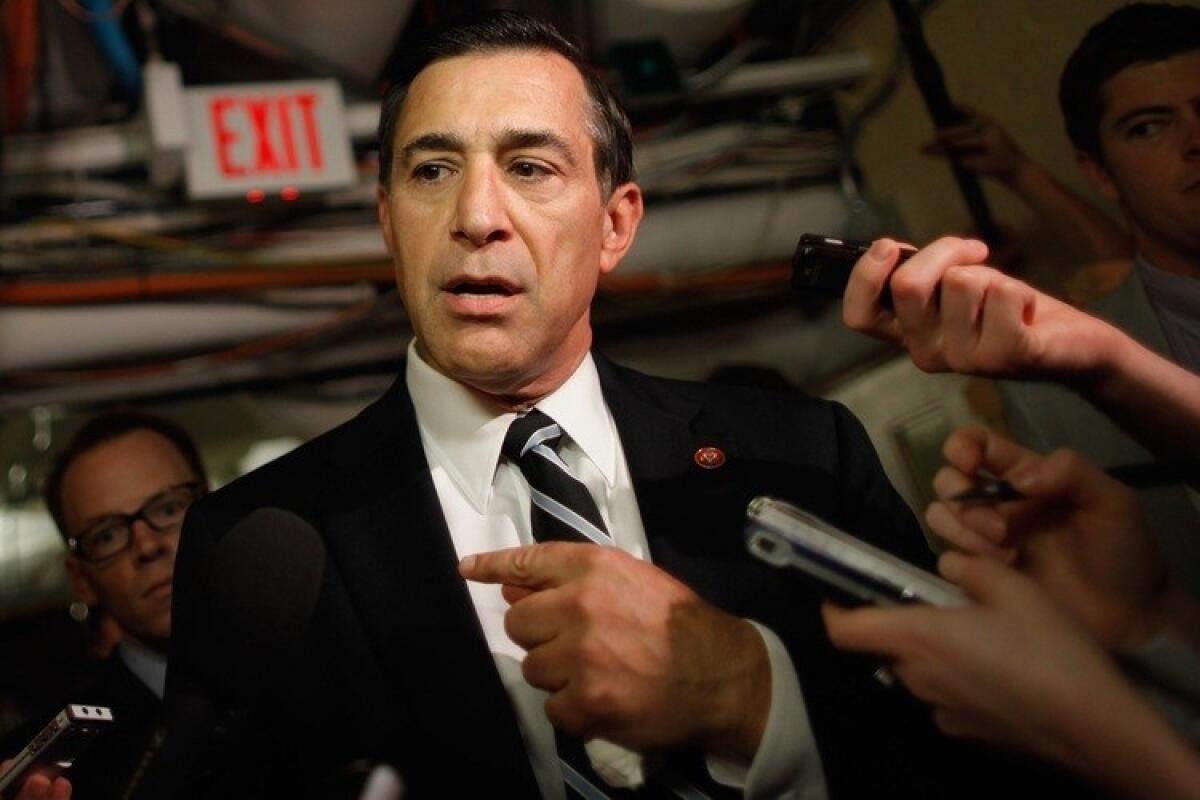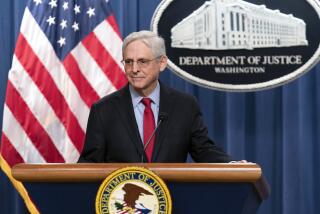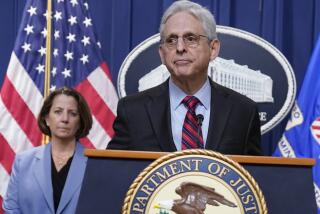Congress expands Fast and Furious probe to White House

Congressional investigators reviewing the failed gun-tracking program Operation Fast and Furious have formally asked the Obama administration to turn over copies of âall recordsâ involving three key White House national security officials and the program, other ATF gun cases in Phoenix, and all communications between the White House and the ATF field office in Arizona.
The letter signed Friday by Rep. Darrell Issa (R-Vista), chairman of the House Committee on Oversight and Government Reform, and Sen. Charles E. Grassley of Iowa, the top Republican on the Senate Judiciary Committee, was sent to National Security Advisor Thomas E. Donilon, a top aide to President Obama.
It marks a significant step in the committeeâs investigation into the failed gun-tracking operation, as the committee begins to broaden its investigation from the federal Bureau of Alcohol, Tobacco, Firearms and Explosives and targets White House and Department of Justice officials.
This material, Issa and Grassley said, âwill enable us to determine the extent of the involvement of White House staff in Operation Fast and Furious.â
White House officials, along with those at the Justice Department, said they have been cooperating in the widening probe, begun earlier this year when several ATF whistleblowers alerted Congress that Fast and Furious weapons were found at the scene of the slaying of a U.S. Border Patrol agent.
A White House official said that âno one at the White House knew about the investigative tactics being used in the operation, let alone any decision to let guns walk.â
The official, who asked not to be identified Friday because the case is continuing, also said White House staffers and some members of Congress, including Issa, were given Fast and Furious briefings as early as April of 2010, but not about the investigative tactics of the operation.
âThese e-mail exchanges show nothing more than an effort to give local color to a policy initiative that was designed to give more resources to help with the border problem,â the official added.
Under the program, ATF agents allowed illegal gun purchases and hoped to track the weapons to Mexican cartel leaders. But most of the more than 2,000 firearms were lost. Hundreds have reportedly turned up in Mexican crime scenes, two at the shooting where Border Patrol Agent Brian Terry was killed, and a semi-automatic was used in an altercation and assault with police in Maricopa, Ariz.
The congressional letter comes after a series of emails surfaced last week showing that William D. Newell, the ATF field supervisor in Phoenix during Fast and Furious, was in routine contact with Kevin OâReilly, then the White House director of North American Affairs for the National Security Council. The emails discussed a broad range of gun-trafficking investigations on the Southwest Border, and White House officials have since acknowledged that the cases were part of Fast and Furious.
The White House has said that OâReilly forwarded the emails to two other White House officials â Dan Restrepo, special assistant to the president and senior director for Western Hemisphere Affairs on the NSC, and Greg Gatjanis, director for Terrorist Finance and Counternarcotics, Counterterrorism Policy, also on the NSC.
In their letter, Issa and Grassley discussed a new email in which Newell told OâReilly about a specific case that ATF agents had been aware of for three months involving a 22-year-old illegal gun purchaser whom the ATF allowed to buy nearly 700 firearms.
The purchaser was on food stamps and, Newell said in a follow-up email to OâReilly, âwhen a 22-year-old kid on State financial assistance walks into a gun store and plops down $12,000 in cash to buy a tripod mounted .50 caliber rifle thatâs a clue (even for us) that heâs involved in trafficking firearms for a Mexican DTO [cartel].â
According to Issa and Grassley, that exchange of information makes it âclear that the case Mr. Newell and Mr. OâReilly were communicating about was Fast and Furious.â
The letter requests all emails, documents, briefing papers and handwritten notes involving OâReilly, Restrepo and Gatjanis during the Fast and Furious period, which ran for 15 months between fall 2009 and January 2011. The committee also wants to personally interview OâReilly by the end of this month.
More to Read
Sign up for Essential California
The most important California stories and recommendations in your inbox every morning.
You may occasionally receive promotional content from the Los Angeles Times.











